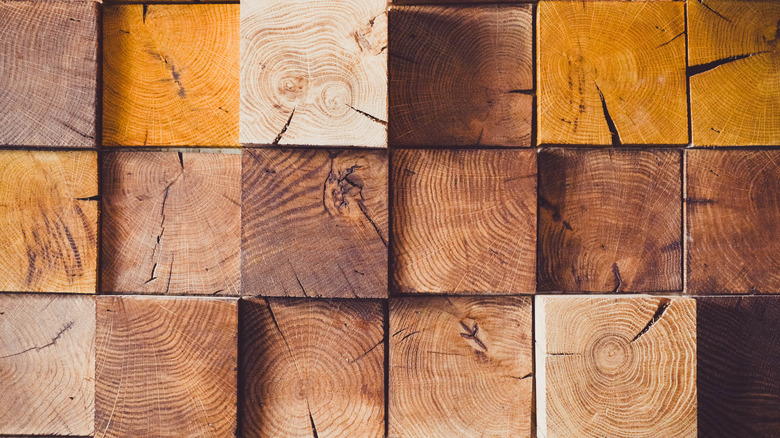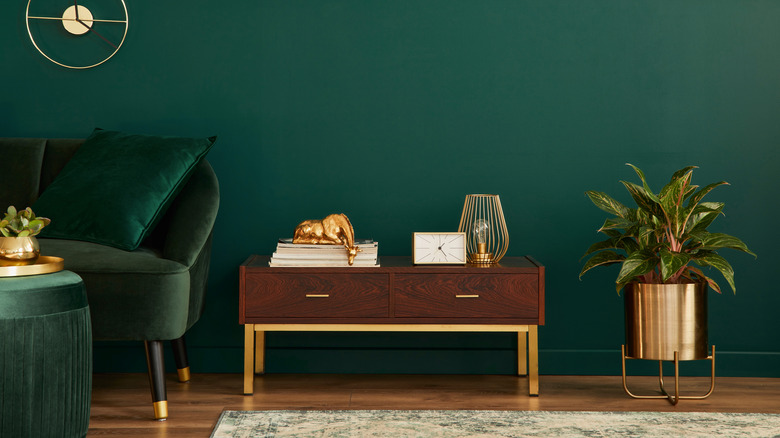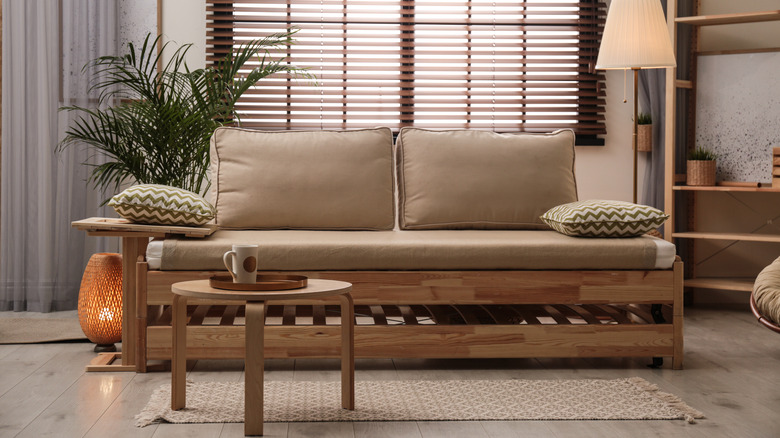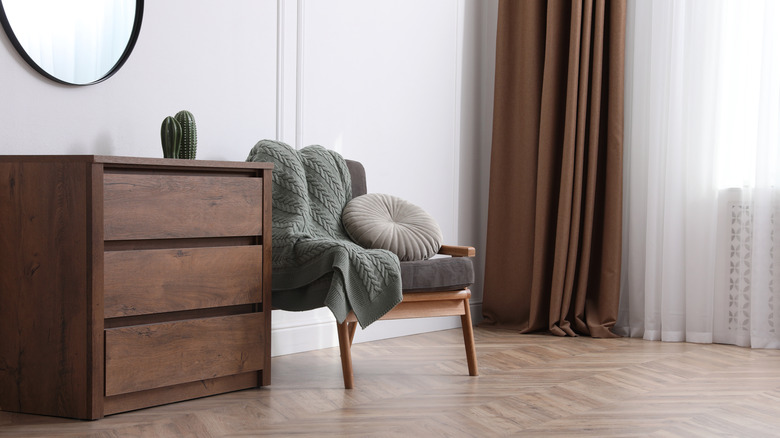Clever Tips For Perfectly Mixing Wood Tones
Not so long ago, clunky wood entertainment centers and coordinated bedroom sets were the peaks of trendiness. According to furniture retailer Oak Unlimited, wood furniture is still as popular and timeless as ever, but gone are the days when all the wood furnishings in your home had to match. You don't have to overhaul your whole wood furniture set up to have a beautiful home. Mixing wood tones can be a much better way to create a warm, personal, and comfortable living space.
But what can you do if all of the wood tones in your home are unique? Is it possible to pair walnut and white oak in the same room? Although mixing wood tones can help your space look more modern, you still want your home's furniture and décor to look cohesive and not too mismatched. Luckily, there are some tried and true tips for complementing all of the wood in your home.
Choose similar undertones
Even if it's all made of wood, furniture, cabinetry, flooring, and décor can have differing undertones. Gray, dark brown, black, and pale white lumber is most often cool-toned and more popular in modern design. Wood furniture with warm undertones may look slightly more traditional, with hints of red, orange, or yellow in the grain. A self-proclaimed color expert, Interior Designer Kylie Mawdsley recommends lining different woods to determine their undertones. Warm woods will play well with other warm woods, and cool woods will pair well with cool woods. If you're having trouble specifying your wood's undertones, you can also hold it up to a piece of colored paper or clothing.
Discover which colors seem to blend with and complement the wood and which ones stand out in stark contrast. It probably has cool undertones if the wood blends seamlessly with colors like blue, black, silver, or bright white. It likely has a warm undertone if your wood matches better with beige, green, ivory, or gold. Knowing your wood's undertone is crucial for matching furniture in a room and shopping for new pieces. You'll need to choose wood with similar undertones to create a cohesive feel with different wood colors. For example, a cool gray-stained coffee table will look out of place on bright cherry floors, so that a toasty walnut coffee table could be a better choice.
Create a buffer
Do you have an abundance of wood furniture that feels mismatched or out of place? When it comes to curating the perfect home, sometimes more is indeed too much. According to an article published by UT News, the décor items we display in our homes play an important role in self-expression and comfort. Adding rugs, curtains, houseplants, and other soft, personal touches can help to break up the visual "woodiness" of a space, creating more depth and dimension.
Rugs, primarily, serve as an excellent buffer between two different tones of wood. This is because they can make the contrasting wood tones less obvious where they touch the most: the floor. Adding soft and natural texture in unexpected areas, like shelf décor and lamp shades, is another excellent way to unite the space. These buffer materials aim to help varying woods fade into the background, so let the textiles take center stage. Feel free to play with fun textures, bright colors, and patterns that draw your eyes away from the wood floors and furniture.
Find some middle ground
Our personal tastes change as we grow older, and no one is immune to passing furniture trends. If you've collected furniture pieces in vastly different shades, one of the best ways to complement your home is to find some middle ground. Be careful not to add too much wood to your space, but incorporate a binding wood color into your floors, furniture, or cabinetry. This middle color should lie between your lightest and darkest shades of wood while complementing both.
Accent colors can also create a very impactful difference when pulling mismatched woodgrains together, via Ballard Designs. Take inspiration from your wood tones when choosing home décor items, such as throw pillows, blankets, vases, and books. Place similarly colored items throughout the room to help the varying wood tones feel more unified and invite the eye around the room. For example, soft peach curtains and pillows offer the perfect middle color to blend white oak floors and cherry wood furniture.



